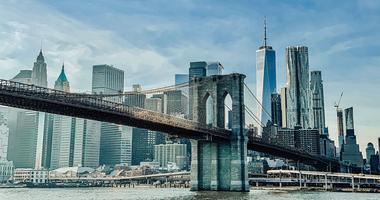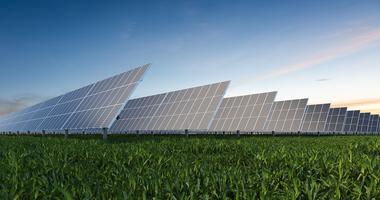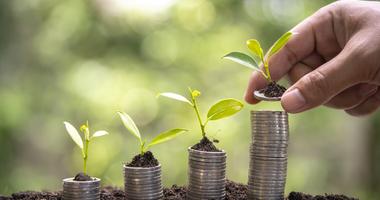
What Reform of the World Bank Might Look Like
Although there are hopeful signs that the Bank is moving in the right direction on development and climate finance, concerns remain that the World Bank might be failing to fully meet the scale and urgency of this moment.
6 min read
It's perhaps the cruelest fact of the climate crisis: Developing countries that have contributed the least to global emissions often bear the brunt of the consequences in everything from rising sea levels to increasingly powerful storms.
At the same time, emerging nations face multiple other crises, from debt and poverty to disease outbreaks and more.
Multilateral development banks (MDBs) like the World Bank can and should be a first line of defense in relieving these burdens.
And although there are hopeful signs that the Bank is moving in the right direction on development and climate finance, concerns remain that the World Bank might be failing to fully meet the scale and urgency of this moment.
That’s where the idea of reform enters the picture.
What is Multilateral Development Bank (MDB) Reform?
MDBs, such as the World Bank, were originally created to help rebuild countries devastated by World War II – and as time went on, their missions shifted from reconstruction to addressing development and poverty.
In today’s context, addressing development and poverty means addressing the polycrisis that we are living in – the joint impacts of the COVID-19 pandemic, Russia’s war in Ukraine, the climate crisis, and skyrocketing costs of living.
While these events have caused many countries to fall behind on their development goals, they have also made clear that today’s fragmented global financial system is not designed to properly address our current global challenges.
Enter MDB reform – the act of better aligning bank missions and financial flows with global climate and sustainable development needs and goals, with emphasis on providing financing that does not further exacerbate the debt burdens of countries in need.
Why Are Reforms Needed?
The World Bank is the oldest and largest MDB and aims to provide financial assistance that promotes economic development in developing countries. Since its first loan in 1947, the Bank and its lending arms – such as the International Bank for Reconstruction and Development (IBRD) and the International Development Association (IDA) – have funded over 12,000 development projects throughout the world.
Financing helps developing countries with a variety of development initiatives, such as increasing agricultural productivity, expanding health care, and modernizing infrastructure – but it has largely been provided in the form of debt-creating instruments such as loans, and the World Bank often isn’t the only lender that developing countries are borrowing from.
To make a long story short, multiple loans and their associated interest rates add up to a lot of debt for countries already struggling to get by. This creates a feedback loop of countries needing to prioritize servicing their debt instead of being able to focus on their development, which was what the loans (often) aimed to address in the first place.
Recent data shows that debt servicing by Global South nations is absorbing an average of 38% of budget revenue and 30% of spending – with today’s global debt burdens the highest since record-keeping began. Some developing countries are even forced to spend more on servicing their debt than on serving their people. For example, in countries throughout Africa, the amount of interest payments is higher than investment in education or health.
In 2022 alone, developing countries paid a record $443.5 billion USD in debt service payments.
In the context of climate, servicing debt puts climate action on hold – and when climate catastrophe strikes, developing countries often need to borrow even more money to attempt to build back essential infrastructure. Lastly, countries struggling to repay debts may look for quick cash through the exploitation of natural resources, including fossil fuels – further contributing to climate change.
What Could Reform Look Like for the World Bank?
By aligning financial flows with low-carbon and sustainable development, the World Bank could and should end all fossil fuel financing. Full stop.
A just-released study found that the World Bank provided the most direct financing for fossil fuels of any MDB in the period from 2020 to 2022. And between the years 2016 to 2020, the Bank provided an estimated $12 billion USD in direct project finance for fossil fuels in over 35 countries.
On top of this, $10 to $20 billion USD was estimated to be given annually as “government budget support” – which, notably, does not appear to restrict fossil fuel spending. There were also reported policy reforms – in the wrong direction – during this period that increased fossil fuel profits and spurred billions of dollars into new fossil fuel investment.
And while we don’t want to get hung up on the past, it’s obvious that we can’t let this trend continue into the future.
World Bank lending can be used to accelerate a just transition to clean energy throughout the world – and it should do so without simultaneously funding fossil fuels or creating more unsustainable debt. For a larger contribution to global climate goals, the Bank should implement a policy restricting all forms of fossil fuel finance with its associated increased support for clean energy.
Addressing low-carbon and sustainable development requires large amounts of financing, and public finance flows alone are inadequate to address the energy transition needed to keep limiting warming to 1.5 degrees Celsius within reach. Public finance, including finance leveraged by the World Bank, can serve as an enabler for private sector investment – and a deepening relationship between the World Bank and the private sector could unlock additional financing and help de-risk investments.
But that relationship and World Bank finance should be used to ensure that private sector investments are on the receiving nation’s terms, so that they are just, effective, and economically sustainable. We need the World Bank to guide private finance towards contributing to meaningful and lasting climate action, rather than enabling the private sector to control its direction based on short-term profit.
Additionally, financing for the energy transition needs to be accessible.
Currently, developing countries borrow money at rates up to eight times higher than developed countries. World Bank reform needs to ensure that Global South nations have access to the fair credit they need to build healthy and resilient net-zero economies, without exacerbating debt.
How Do We Move Forward?
Business-as-usual at the World Bank wasn’t going to cut it anymore when in late-2022 former World Bank President David Malpass ignited a firestorm by revealing himself to be a climate denier. Civil society hopped to and made it clear that you can’t have a climate denier leading one of the world’s most important financial institutions as countries in the Global South continue to be rocked by climate catastrophe with limited means of recovery.
Increasing pressure on Malpass, led by our founder and chairman Al Gore, prompted him to step down in early 2023, one year before his term was scheduled to end – and in came Ajay Banga.
Under Banga’s leadership, the World Bank has adopted a new mission and vision: “To create a world free of poverty – on a livable planet.”
President Banga believes that the goals of climate action and alleviating poverty are connected, and since his tenure with the Bank began, we’ve seen some progress on new initiatives to address such challenges.
Banga reaffirmed the Bank’s commitment to align its financial flows with the goals of the Paris Agreement starting July 1, 2023. In December 2023, the Bank announced that it would devote 45% of its financing between July 1, 2024 and June 30, 2025 to climate-related projects.
Additionally, the Climate Resilient Debt Clauses were expanded under his leadership, which would pause interest payments on all existing loans in eligible countries struck by natural disasters. This is a nice step, but addressing debt shouldn’t be contingent upon a country experiencing a devastating event.
As with any fresh commitment, the scale and implementation remains to be seen. After all, President Banga was recently criticized for defending the Bank’s investments in natural gas, stating, “We are of the belief that it plays a role, but a very small role.” And while Banga has stated that the Bank is trying to reduce its investment in fossil fuels, it still allocated $170 million USD to natural gas investments in 2022.
If the Bank truly wants to be Paris-aligned, zero dollars should be going to fossil fuels. The International Energy Agency has made it clear – the pathway to net zero greenhouse gas emissions and keeping 1.5 degrees Celsius of warming within reach requires ending all new fossil fuel investment.
The world needs to see the Bank dedicate itself to the global buildout of clean energy technologies with better and fairer financing for borrowers.
The Work Continues
This April, the World Bank Group and International Monetary Fund will have their spring meetings in Washington, DC.
Ministers of finance and development, private sector executives, and civil society representatives – including The Climate Reality Project – will be on hand to discuss addressing climate change, poverty eradication, the world economic outlook, and economic development. We hope that the work towards a better World Bank continues here, as the spring meetings provide a chance to further deliver on reform objectives and climate ambition.
Interested in taking action? Join us in calling on the World Bank to make the changes needed to meet this pivotal moment.
We are calling on World Bank President Banga to:
- End all financing for fossil fuel projects worldwide.
- Use World Bank lending to accelerate a just transition to clean energy in the Global South and beyond.
- Ensure Global South nations have access to the fair credit they need to build healthy and resilient net-zero economies.




